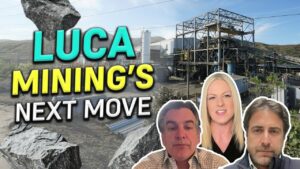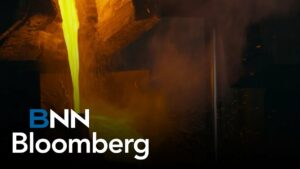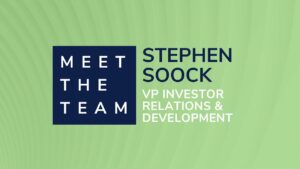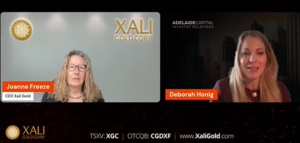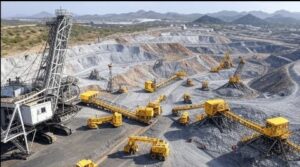This Managements Discussion and Analysis (MD&A) should be read in conjunction with the unaudited consolidated financial statements and accompanying notes of Zaruma Resources Inc., (the Company or Zaruma) for the six and three months ended June 30, 2011, which have been prepared in accordance with International Financial Reporting Standards (IFRS). In prior years the Company prepared its interim and annual consolidated financial statements in accordance with Canadian Generally Accepted Accounting Principles (Canadian GAAP). The Companys 2010 comparatives in this MD&A have been presented in accordance with IFRS. All financial numbers are in US dollars unless otherwise stated.
This MD&A contains forward-looking statements, including statements concerning possible or assumed future results of operations of the Company. Forward-looking statements typically are preceded by, followed by or include the words believes, expects, anticipates, estimates, intends, plans or similar expressions. Forward-looking statements are not guarantees of future performance. They involve risks, uncertainties and assumptions, including, but not limited to: securing additional funding to continue its development programs, the successful definition of recoverable economic resources, maintaining the title and beneficial interest in the properties, retaining the necessary governmental approvals and the successful financing, construction and operation of a facility for the economic extraction of gold and copper. The Companys results could differ materially from those anticipated in these forward-looking statements.
This MD&A has been reviewed and approved by the Board of Directors of the Company, and contains certain information that is current to August 26, 2011. Events occurring after that date could render the information contained herein inaccurate or misleading in a material respect. The Company may, but is not obligated to, provide updates to forward-looking statements, including in subsequent news releases and its interim MD&As filed with regulatory authorities. Additional information regarding the Company is available on the System for Electronic Document Analysis and Retrieval (SEDAR) at www.sedar.com and at the Companys website www.zaruma.com
Executive Summary
Zaruma is engaged in the exploration and development of gold and copper projects at San Antonio in the state of Sonora, Mexico, currently the Luz del Cobre Copper Project, (LdC), and the Sapuchi Gold Project, (Sapuchi). The Company also has other prospects on the 11,240 hectare property held by ML, at various stages of exploration.
If the going concern principle used in preparing the consolidated financial statements is not appropriate, adjustments will be necessary to the carrying amounts and classification of assets and liabilities and expenses in these consolidated financial statements. The adjustments could be material.
LdC is designed to produce 15 million pounds of copper cathodes per year at an estimated average cash cost, (cost before interest, depreciation and taxes) of $1.20 per pound.
On May 20, 2011 the Company announced the commencement of the escrow period for a private placement of units consisting of common shares and common share purchase warrants of the Company to raise initial gross proceeds of $25 million, and a debt financing to raise $30 million. The escrow period was to provide time to file the creditors settlement agreements with the courts in order to stop and withdraw the legal proceedings against ML and the Company, and make payment to those creditors after the agreements were filed and accepted by the respective courts in Mexico.
On July 20, 2011 the Escrow Agent was advised that Mexican courts had approved the agreements which ended the litigation, and that the necessary filings were made in certain courts and registries in Mexico that will result in the removal of existing liens on the Companys mining concessions. The Escrow Agent had paid the creditors
1
that had provided their settlement agreements and the remaining funds held in escrow were remitted to the
Transactions that took place during the escrow period included the following:
The Company issued 488,649,998 common shares and 488,649,998 warrants permitting the holder to acquire the same number of common shares at a price of C$0.10 for a period of two years for gross proceeds of $25 million. The units of one share and one warrant were priced at C$0.05.
EMLQ was paid $23.5 million in satisfaction of its debt financing, which at June 30, 2011 totalled $27.2 million. In exchange for the cancellation of all agreements between the Company and Glencore International AG and
certain of its affiliates, the Company issued 21,500,600 common shares and 21,500,600 warrants permitting
the holder to acquire the same number of common shares at a price of C$0.10 for a period of two years. The units of one share and one warrant were priced at C$0.05 for a value of $1.1 million. A receivable from EMLQ of
$0.5 million was forgiven.
Gravity Ltd. converted its bridge financing C$800,000 Convertible Promissory Note and C$83,047 in accrued interest to 17,660,940 common shares of the Company.
Zaruma Gold Mining Ltd. (ZGML) subscribed for US$20 million of the equity financing, with a commitment that the funds be used for the completion of the Luz del Cobre Copper Project. ZGML together with its affiliate, Kirkland Intertrade Corp. (Kirkland) has aggregate ownership of 405,533,980 common shares, representing approximately 62% of the issued and outstanding common shares of the Company on an undiluted basis.
Under a shareholder rights agreement (the Shareholder Rights Agreement) effective as of July 15, 2011 between the Company and ZGML, ZGML is entitled to appoint the majority of the directors (so long as it holds at least 50% of the issued and outstanding common shares of the Company). Such number of directors as is equal to its percentage shareholding in the Company (if it holds less than 50% of the issued and outstanding common shares of the Company). In addition, the Shareholder Rights Agreement provides ZGML with pre-emptive rights with respect to certain potential future issuances of certain securities by the Company, until such time as ZGML and its respective affiliates exercise control or direction over less than 19.9% of the issued and outstanding common shares of the Company on an undiluted basis.
Deutsche Bank AG, London Branch (the Bank), acting as Agent provided US$30 million in debt financing, with the proceeds dedicated to completion of the Luz del Cobre Copper Project, including the settlements with creditors. The Loan accrues interest at 10% without payment for the first nine months, then amortizes over a 48 month period. US$5 million is held in a Performance Reserve Account, with US$3 million to be released when the copper production reaches 1500 tonnes over three consecutive months, approximately 80% of design capacity of the copper recovery plant. The remaining US$2 million will be held until two months prior to the end of the amortization period.
The Company entered into a Copper Collar Swap Transaction with the Bank for 190 tonnes per month for 48 months (approximately 30% of projected production) whereby if the average price of copper for the month is below $4500 per tonne, the Bank will pay the Company the difference, and if the price exceeds $9525 per tonne the Company will pay the Bank the excess over $9525 for the 190 tonnes per month. The Company also entered into a Copper Call Option Agreement whereby the Bank will have a call on 150 tonnes per month for 48 months at a price of $10,100 per tonne.
Security arrangements have been put in place with respect to the new debt financing, including a new first lien on the mining concessions and the fixed assets in Mexico and a pledge of the shares of ML.
Amounts owing to Officers and Directors totaling $725,191 at June 30, 2011 were paid out of the proceeds of the financing.
Final Approval of the listing of the Company as a Tier 1 Mining Issuer on the TSX Venture Exchange was received and the Companys shares commenced trading on the TSXV on August 10, 2011.
On completion of the financing, the Company had 652,320,285 common shares outstanding.
2
MEXICOLuz del CobreThe 2006 NI 43-101 Technical Report on the feasibility of LdC was completed by M3 Engineering and Technology Corporation, (“M3”), Tucson, Arizona and P&E Mining Consultants Inc., (“P&E”), Brampton, Ontario. Qualified Persons and Independent Consultants Peter Erath, P.Eng. of M3 authored the review of the process design, flow sheet, engineering and capital and operating cost estimates, and Eugene Puritch, P.Eng., of P&E estimated the ore reserves and prepared the pit optimization and production schedule.
The resource estimate is:
LUZ DEL COBRE RESOURCES | Oxide | Mixed Oxide/Secondary Sulphides | Total Measured and I ndicated | ||||||
LUZ DEL COBRE RESOURCES | Tonnes | Cu% | Cu lbs mil | Tonnes | Cu% | Cu lbs mil | Tonnes | Cu% | Cu lbs mil |
MEASURED I N DICATED | 387,000 521,000 | 0.89 0.71 | 7.6 8.2 | 1,654,000 2,000,000 | 1.40 0.96 | 51.0 42.3 | 2,041,000 2,521,000 | 1.30 0.91 | 58.6 50.5 |
TOTAL | 908,000 | 0.79 | 15.7 | 3,654,000 | 1.16 | 93.4 | 4,562,000 | 1.09 | 109.1 |
I N FERRED | 33,000 | 0.62 | 0.50 | 156,000 | 0.61 | 2.1 | 189,000 | 0.61 | 2.5 |
Mineral resources which are not mineral reserves do not have demonstrated economic viability. The estimate of mineral resources may be materially affected by environmental, permitting, legal, title, taxation, sociopolitical, marketing, or other relevant issues.
The quantity and grade of reported inferred resources in this estimation are uncertain in nature, there has been insufficient exploration to define these inferred resources as an indicated or measured mineral resource and it is uncertain if further exploration will result in upgrading them to an indicated or measured mineral resource category.
The planned production is 15 million pounds per year over the first 6 years. The cash cost of production is estimated by the Company to average $1.20 per pound of copper, assuming a sulphuric acid cost of $160 per tonne fob minesite. With a copper price of US$3.00 per pound this results in a projected total cash flow before taxes and interest for the first six years of $160 million. Because of the lengthy suspension of development and construction, additional costs have been incurred and the final project cost of LdC may rise to $50 million including the required working capital and start-up costs.
Assumed Copper price | $3.50 | $3.00 | $2.50 |
Estimated Cash cost of production | 1.20 | 1.20 | 1.20 |
Estimated Cash flow after $50m.capital cost recovery | $156 million | $110 million | $68 million |
During the course of removing 337,000 tonnes of overburden from the main orebody in 2008, 50,700 tonnes of ore were mined and stockpiled. The copper content of the ore averaged 0.83% Cu, which is higher than indicated in the block model used in the feasibility study, and the ore zone outlined in that portion of the block model was confirmed. 8,100 tonnes of low grade copper material, averaging 0.26% Cu and not considered in resource calculations, was separately stockpiled as it will likely be economical to leach during the life of the mine.
The site has been kept secure, and steps were taken to protect and safeguard the equipment, machinery and structures. Weather conditions during the heavy summer rainfall months were better than normal in both 2009 and 2010, with only minor damage to the minesite roads and the leach pad.
Luz del Cobre Mine Development and Construction
Field activity started in November, 2007 with the completion of access roads to the site and determination of plant site, leach pad location and waste dump site. The project had been fast-tracked in order to be in production within 14 months.
3
Due to the extra carrying cost of the project for two and a half years, the added cost of suspending the development and subsequently restarting, and additional financing costs, the capital cost including start-up working capital is expected to be $50 million. Tests show that the economic viability of the project is not particularly sensitive to capital costs, but is very sensitive to the price of copper, and somewhat less so for sulphuric acid prices. A change of $0.10 per pound in the price of copper changes the life of mine operating cash flow by $9 million and a change of $10 per tonne of sulphuric acid would have an effect of $1 million.
Commissioning of various parts of the equipment and plant was in progress in 2008. An examination of equipment on site has confirmed the effectiveness of protective steps taken to limit damage. Some of the major equipment items were warehoused by suppliers in the US and Mexico during this time.
A preliminary estimate of the time required to reach first production is the second quarter of 2012..
San Antonio-Gold
On the same block of mining concessions as Luz del Cobre, described as the San Antonio property, there exists distinct, separate and individual gold bearing areas, some of which have been hand mined by artisans as long as
A Technical Report dated June 15, 2009 was prepared by P&E. Qualified Persons and Independent Consultants Eugene Puritch, P.Eng., Tracy Armstrong, P.Geo., and Malcolm Buck, P.Eng., including the resource estimates and preliminary economic assessment. The operating plan and cost estimates for Sapuchi were reviewed and reported on by Rolly Nice, AusIMM, Independent Metallurgical Engineer, Sydney, Australia.
Within an optimized open pit shell, there is an estimated oxide leachable mineral resource of 98,400 ounces of contained gold, applying a cut-off grade of 0.30 g/t and a 24 month trailing average gold price of US$805/oz. The resulting estimated tonnes and grade for potentially mineable areas are set out in the following table.
Sapuchi Oxide Gold Mineral Resources:
Classification | Tonnes | Au (g/t) | Au (oz) |
Indicated | 2,220,000 | 1.04 | 74,300 |
Inferred | 872,000 | 0.86 | 24,100 |
(1) Mineral resources which are not mineral reserves do not have demonstrated economic viability. The estimate of mineral resources may be materially affected by environmental, permitting, legal, title, taxation, sociopolitical, marketing, or other relevant issues.
(2) The quantity and grade of reported inferred resources in this estimation are uncertain in nature, there has been
insufficient exploration to define these inferred resources as an indicated or measured mineral resource and it is uncertain if further exploration will result in upgrading them to an indicated or measured mineral resource category.
The mineral resources were estimated using the Canadian Institute of Mining, Metallurgy and Petroleum (CIM), Standards on Mineral Resources and Reserves, Definitions and Guidelines prepared by the CIM Standing Committee on Reserve Definitions adopted by CIM Council in 2005.
Costs spent on Sapuchi in 2009 were approximately $217,000 and were written off as incurred, in accordance with the Companys policy. No costs were incurred subsequent to the completion of the Technical Report.
4
With the LdC copper project being given top priority, the Company does not plan to activate Sapuchi in the coming months.
Copper ExplorationThere has been no exploration activity since the beginning of 2009.
The interpretation of the exploration results at Carrizo is that it supports the belief that the target area is a major mineralized centre in a highly prospective, large porphyry-driven, iron-oxide-copper-gold (IOCG) system. The Sapo area appears metalurgically similar to the LdC copper deposit. Drilling and geological work at Sapo- Carrizo was conducted under the supervision of Qualified Person and Exploration Manager James Poulter, and assays were done by Jacobs Assay Office in Tucson, Arizona.
Further work is not contemplated until LdC is operational.
VENEZUELA Alcaravan / El Foco
Care and maintenance costs incurred have been minimal, and land taxes accrued in the six months ended June
FINANCIAL REVIEWFinancial Condition and Liquidity
The Companys financial statements are prepared in accordance with International Financial Reporting Standards (IFRS), and as the United States dollar is the principle currency of the Companys business, the statements are presented in US dollars.
The largest single expense for the quarter was the interest on the debt financing for LdC of $289,000, (2010-
$276,000). As the settlement with EMLQ involved no payment of the accrued interest, the accrued interest in the six months to June 30, 2011 will be reversed in the third quarter. Corporate administrative costs for the three months were $130,000 compared to $183,000 in the three months to June 30 of 2010.
Legal and consulting costs related to the financing have been deferred as a capital item to be either recorded as a cost of raising the equity capital, or a cost to be amortized over the life of the debt financing. Accumulated deferred financing costs totaled $2,216,000 at June 30, 2011 compared to $736,000 at December 31, 2010.
As set out earlier in this MD&A under Executive Summary, the completion of the financing in July 2011 completely changes the financial condition of the Company. The EMLQ debt financing is a current liability at June 30, 2011 as the loan was in default. The $30 million in new debt financing is a long-term liability and permitted the repayment of the EMLQ loan and the write-off of the accrued interest. The new $25 million in equity financing adds to the Companys liquidity and provides funds for the completion of the LdC project.
The completion of the financing has resulted in the Company having a positive working capital, and what was a negative Shareholders deficiency has become a Shareholders equity in the balance sheet.
5
The transactions completed as part of the financing are set out in the Executive Summary.
Critical Judgements and Estimates
Significant accounting policies are described in Note 3 to the consolidated financial statements. The preparation of the statements requires management to make judgements and estimates and assumptions that affect amounts reported in the statements and the notes thereto. The following is a list of the policies that the Company believes are significant, due to the degree of uncertainty regarding the estimates or assumptions involved and the magnitude of the assets, liability, revenue or expense being reported.
Carrying value of mining and exploration propertiesExploration expenditures related to mineral properties are expensed in the period incurred, unless it is probable that these costs will be recovered from future operations. Property acquisition costs are deferred unless it is determined that these costs will not be recovered from future operations, at which point the costs would then be written off.
The Company regularly reviews the carrying value of its properties for impairment to determine whether the carrying amount of these assets will be recoverable from future cash flows. Assumptions underlying the cash flow estimates include the forecasted prices for copper and gold, production levels, and operating, capital, exploration and reclamation costs, which are subject to risks and uncertainties. It is therefore possible that changes in estimates with respect to the mine plans could occur which may affect the expected recoverability of the carrying value. As reported earlier in this report, management has concluded that there is no impairment to the carrying value of the mineral properties.
Stock option compensation
The Company uses the fair-value method of accounting for stock options granted to employees and directors. Under this method, the fair value of the stock options is estimated using the Black-Scholes option pricing model at the grant date, with fair value estimated based on the risk free interest rate, expected life that the option will be outstanding and the expected volatility of the Companys share price. In periods of financial turbulence, the price volatility of the Companys shares has been very high, which affects the valuation of the options granted. The total fair value of the options is amortized over the vesting periods as compensation expense, with an offset to contributed surplus.
Future income taxes
The Company follows the liability method of accounting for income taxes. Future income tax assets and liabilities are established where the accounting net book value of assets and liabilities differs from the corresponding tax basis. As the Company is not yet operational, the benefit of future income tax assets has not been recognized as their realization is judged to be uncertain at this time.
Adoption of International Financial Reporting Standards (IFRS)A detailed analysis of the differences between IFRS and the Companys accounting policies as well as an assessment of the impact of various alternatives was carried out.
6
Some of the specific areas reviewed and considered to date are:
Revenue Recognition – As the Company has never had revenue to report, it will be adopting appropriate policies to satisfy IFRS requirements. The Company anticipates producing copper and gold which will be sold under contractual terms. No complications in adopting IFRS are foreseen.
Inventories – The Company has not had inventories, so it will adopt IFRS policies as it goes into production.
Property, Plant and Equipment – IFRS requires that the Company identify the different components of its fixed assets. As this has been the Companys practice, we are in compliance. Assets have been identified in accordance with their useful lives in order to properly amortize their cost to operations. In accordance with normal practice in the mining industry, the estimated life of mine will affect the amortization rates in some categories, and this estimate is subject to change as the mine progresses through production, resulting in revised amortization rates from time to time.
Interest on debt financing during the mine development and construction stage is being capitalized as required by IFRS. During the period of inactivity commencing in 2009, interest was expensed.
Mining Exploration Costs – IFRS permits the capitalization of exploration costs prior to the establishment of ore reserves which would support the economic viability of the project. The Company has in the past expensed exploration and evaluation costs, and as this is permissible under IFRS, it intends to continue with this policy.
Financial Instruments – The Companys current financial instruments are simple and require little analysis. Should the Company enter into hedging agreements on future copper or gold production, the requirements of IFRS will be followed.
Actuarial Valuations – As the Company has no employee benefit plans, a transitional evaluation of liabilities is not applicable.
Impairment Tests – Impairment tests have been applied on the carrying value of projects on a quarterly basis, as required under Canadian GAAP, and will be modified to reflect the methodology of testing for impairment under IFRS. The change will have no effect on the determination of possible impairment for the Companys existing mineral properties.
Income Taxes – An analysis of IFRS requirements will be done as new standards become available. With no current revenues or taxable income, and with no anticipated contentious issues regarding the tax value of assets or non-capital losses carried forward, no complications are anticipated.
Information Systems – The computerized production and accounting systems were a work in process when development of LdC was suspended in October, 2008. With the completion of the financing of the project, the implementation of the reporting systems will resume, with IFRS compatible reporting systems in place by the time of first production.
Financial Disclosure – Based on publications to date, none of the requirements to comply with reporting under
IFRS presents any difficulty.
Impact of Adoption of IFRSUnder prior Canadian GAAP, the net proceeds of the Convertible Note were allocated based on the relative fair values of the liability and equity components. IFRS requires the liability component of the Convertible Note to be fair valued first, with the residual of the net proceeds allocated to equity. The impact of this difference was to increase the reported loss for 2010 by $31,646, increase the Convertible Note by $99,029 and decrease the equity component of the convertible debt by $67,383.
Risks and UncertaintiesThe Companys overall viability and profitability is currently dependent on the completion of the financing, development and construction of LdC and profitable production of copper, or doing so with Sapuchi for gold production. In the future, the Companys viability will depend on the successful definition of other recoverable, economic resources and the establishment of positive comprehensive feasibility studies leading to production decisions. After completion of positive feasibility studies, the Companys success is dependent on maintaining the title and beneficial interest in the properties, obtaining the necessary governmental approvals and the successful financing, construction and operation of a facility to profitably extract the contained metals.
7
Resource Exploration and Development
Resource exploration and development is a speculative business and involves a high degree of risk, including the failure to discover mineral deposits, or deposits of insufficient size to be economical. Even if commercial quantities of mineral deposits are discovered, the price of metals may have significant changes over a short period of time, and are affected by numerous factors beyond the Companys control, including international economic and political trends, inflation, currency exchange fluctuations, interest rates and global consumption patterns. The supply and demand for metals are affected by various factors, including political events, economic conditions and production costs in major producing regions. There can be no assurance that the price for metals in a mineral deposit will be such that the Companys properties can be mined at a profit.
Funding Capital Costs and Exploration
As reported, the debt financing from EMLQ was repaid from funding from the new financing completed in July
As expressed earlier in this report, both LdC and Sapuchi are capable of producing very significant cash flows from operations in a very short period of time, which makes both projects quite attractive.
In the near future, there is no planned exploration activity on the San Antonio property. The Sapo-Carrizo project is not expected to immediately proceed despite very encouraging results. Additional funding will be required if the Company chooses to do exploration work on its properties before a cash flow from operations develops. Failure to obtain additional financing could result in delay, or indefinite postponement of further exploration and development work. The Company has demonstrated its ability to raise financing for exploration purposes over a period of years, but there is no assurance that it will be able to do so in the future.
Commodity Prices
Commodity prices are currently volatile and will have a direct effect on both revenue and costs. Gold leaching requires cyanide which is an industrial product with a relatively stable price structure. The copper leaching process to produce cathodes requires a large quantity of sulphuric acid, which was in short supply on a world- wide basis through 2008, was in oversupply in 2009, and has recently recovered to a more stable level of $160 per tonne based on fob Gulf of Mexico ports.
The gold extraction process requires portable generators to produce power for crushing and stacking, but is not heavily dependent on electricity, so diesel fuel costs are not critical.
Projected commodity costs have been factored into the expected cash cost of production, but there is no assurance that there will not be volatility in these commodity prices.
The price of copper and gold is beyond the Companys control, is sensitive to general economic trends in major markets of the world, as well as to the value of the US dollar relative to other currencies. The price of gold in U.S. funds has been strongly trending upward and far exceeds the projected cost of production at Sapuchi.
Permits and Licenses
Projects require licenses and permits from various governmental departments. The Company is fully permitted for the LdC copper project, but will require minor adjustments to the environmental permit for the Sapuchi gold production. There can be no assurance that necessary permits or licenses can in future be obtained, or that existing licenses and permits will not be revoked, although Mexico has a very favourable record in this regard.
Production Risk
The Company cannot give any assurance that it will achieve its production estimates. Actual production may vary for a variety of reasons, including ground conditions, mine dilution, variations in grade, tonnage or metallurgical recoveries, equipment failures, weather and unforeseen geological conditions, shortages of supplies and parts and restrictions imposed by government agencies. The grade and tonnage of the resource or reserve
8
estimates may differ from actual experience when mined. Recoveries may also vary from the documented pre- production testing. Increases in mining and processing costs could adversely affect the mineral resources.
Political Risk
The Companys project in Venezuela has been affected by political and economic instability. Government pronouncements caused the Company to conclude that it is not likely that the necessary permits will be issued to go into production with its gold project, and therefore wrote down the carrying cost of the property to a nominal $1 in 2008, with the buildings and equipment at the minesite on a care and maintenance basis.
Currency Risk
The US dollar is the Companys functional currency. Capital costs such as machinery and equipment are generally quoted in US dollars in Mexico. The existing debt financing of LdC and the proposed new bank financing is in US dollars
Corporate costs in Canada are paid in Canadian dollars, but these have historically been covered through funds raised in Canadian dollars through the sale of common shares in private placements, as well as the exercise of share purchase warrants.
Amounts due to directors are largely in Canadian funds, with fluctuating unrealized foreign exchange gains and losses until these accounts are settled.
Related Party Transactions
Empresa Minera Los Quenales S.A. (EMLQ), a 5% shareholder at June 30, 2011, provided ML with $23.5 million in financing in 2007-08, plus accrued interest on the loan, for the development of LdC and entered into an earn-in agreement to explore and evaluate a 1,000 hectare area of the Companys San Antonio property. An affiliate of EMLQ acquired the right to purchase the copper produced by LdC for the life of mine. At June 30,
In accordance with the terms of the Convertible Promissory Note issued for $800,000 of bridge financing, Gravity Ltd. had the right to convert the Note to 16 million shares of the Company. The Note and accrued interest was converted on completion of the financing and resulted in the issue of 17,660,940 common shares.
On September 15, 2009 the Company issued a C$100,000 unsecured convertible debenture for cash advanced by Frank van de Water, a director of the Company. The debenture was converted to 2 million shares on November 19, 2010.
In 2009-2011, Mr. van de Water made cash advances of C$300,000 at 10% interest, with no specific terms of repayment. All outstanding advances were repaid on completion of the financing.
Fees payable to the Chief Executive Officer, Thomas Utter, the Chief Financial Officer, Frank van de Water and other Directors, Peter Lorange and Michael Power for service in their designated roles for the six months ended June 30, 2011 were $204,592 (2010 to June 30 $184,219). Of the 2011 fees, $127,302 was unpaid at June 30,
2011. Fees for prior years totaling $283,054 were also outstanding. All outstanding amounts were paid on completion of the financing.
The amount shown as Officers and Directors fees expense to June 30, 2011 in the Statements of Loss, Comprehensive Loss and Deficit is net of $92,241 in time charges by the Chief Executive Officer to ML for project management (2010 to June 30 $86,297).
9
All transactions and balances with related parties are established and agreed by the various parties and approximate the exchange amount.
Off-Balance Sheet Arrangements
The Company has not entered into any off-balance sheet arrangements such as guarantee contracts, contingent interests in assets transferred to unconsolidated entities, derivative financial obligations, or with respect to any obligations under a variable interest equity arrangement.
Proposed TransactionsThe Company will be actively reviewing existing contracts with regard to the development of LdC and may be reactivating these, will be entering into contractual relations normal for the development of the mine and the construction of the SX-EW buildings on site, as well as the supply of equipment, materials and supplies, all in the normal course of business.
OutlookWorld financial conditions in 2007 and 2008 resulted in a major setback for the Company, as it was under- capitalized at a time when it became necessary to raise money for project costs, in a market that made it almost impossible for a junior non-producing mining company to raise capital. The LdC project was suspended in 2008 when it was only months away from start-up.
As set out under the heading Luz del Cobre, the projected cash flow from operations at LdC, before interest and taxes, assuming a copper price of $3 per pound and a projected average cash cost of $1.20 is $160 million over the first six years, compared to an estimated capital cost and required working capital of $50 million.
Management recognizes that the existing Zaruma shareholders ownership has been significantly diluted by the equity financing, but this financing is key to becoming operational, not only with LdC, but also with the prospect of developing the Sapuchi Gold Project and the opportunity to further explore and develop prospects on its mining concessions in Mexico.
August 26, 2011
